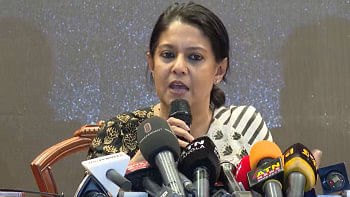The Mosque of Mohammadpur

In the history and classical art section of Bangladesh National Museum, a photo of a beautiful mosque taken during the 60's can surprise audiences if noticed carefully. The mosque in the photo is seen standing by the bank of a mighty river which is so wide that it's other side is not visible. However, the intriguing fact of the photo is it says that the Mughal era riverside structure is called Sat Gambuj Mosque (Seven Domed Mosque) located at Mohammadpur, Dhaka- one of the most populous residential areas of Bangladesh's capital city.
To reveal the puzzle of such a mighty river and the ancient mosque in Mohammadpur area, I went aboard one of the many city buses from Shahbagh that took me to Mohammadpur Town Hall. After asking many for directions countless times, I finally found the mosque on the side of a busy, narrow road. However, the white plastered, magnificent seven domed mosque is no longer standing alongside the mighty river. Due to the rapid expansion of Dhaka city, the river seen in the photo, which is considered to be one of the streams of Buriganga, has been driven southwards and the serene river bank has been replaced by a gigantic madrassa complex called Jamea Rahmania Arabia. In the jungle of roads, bazaars and buildings, the ancient mosque is still preserving a history that has totally been forgotten by the people living around it.

The mosque is believed to have been built by Umid Khan in 1680 AD, son of Shaista Khan, the legendary Mughal governor of Bengal. The mosque stands on a fifteen feet high platform that can accommodate hundreds of people. There are three large domes on the roof of the mosque. Adjacent to these three domes, the architect gracefully placed another four dome-shaped structures due to which the mosque has been named the Seven Domed Mosque. However, the mosque has actually been roofed over by three domes. The eastern facade of the mosque is intricately decorated with glazed tiles.
The mosque is surrounded by a large rectangular garden. The garden also preserves some ancient tombs which are considered to be the final resting places of Mughal aristocrats. On the opposite side of the garden, there is a one chambered, decorated structure which is believed to be the tomb of one of Shaista Khan's daughters. The mausoleum is known as Bibir Mazar "Mausoleum of Bibi".
According to historians, during the rule of Shaista Khan in Bengal, the mosque was the religious centre of rich agricultural villages called Jafarabad, Sarai Begumpur, Katasur, located in between Peelkhana and Buriganga River. The Mughal officials and merchants used to travel along that ancient stream of Buriganga using the quay near the mosque to reach the towns along Brahmaputra river bypassing pirate infested Shitalakhsya River. Ancient drawings depict that boats and merchant vessels used to be anchored at the quay near the mosque.

After the end of the Mughal rule, the villages near the mosque were abandoned and the mosque was almost destroyed due to disuse and invading vegetation. During the Pakistan period, the mosque and the ancient tombs were renovated and currently these ancient structures are maintained by the Department of Archaeology.
The Saat Gambuj Mosque is a unique example of Mughal architecture. However, many of its Mughal features have been destroyed due to unplanned modifications such as use of terrazzo on the floor inside the mosque. Proper care should be taken so that no further careless modification and encroachment can destroy this priceless heritage structure.


 For all latest news, follow The Daily Star's Google News channel.
For all latest news, follow The Daily Star's Google News channel. 



Comments